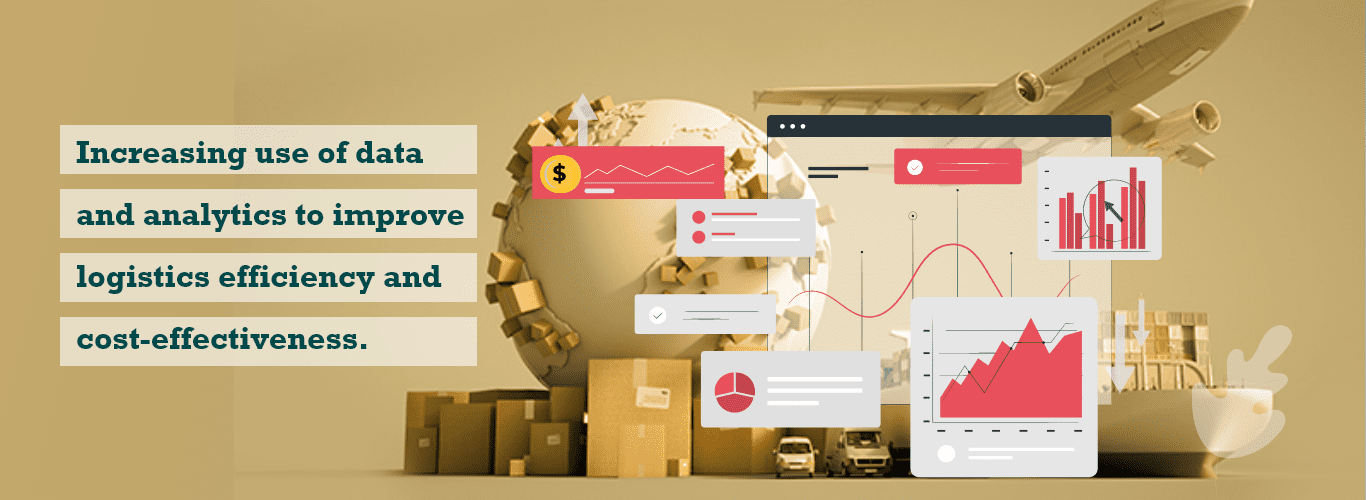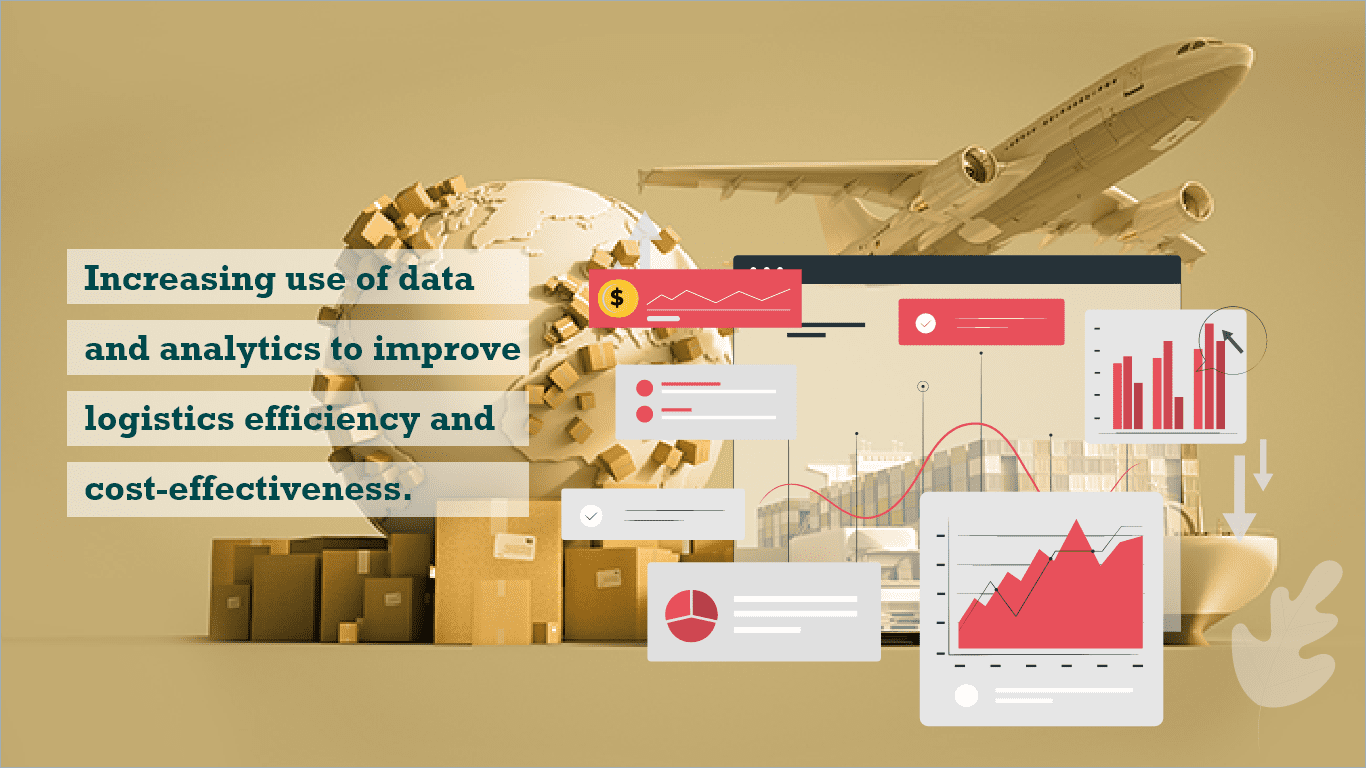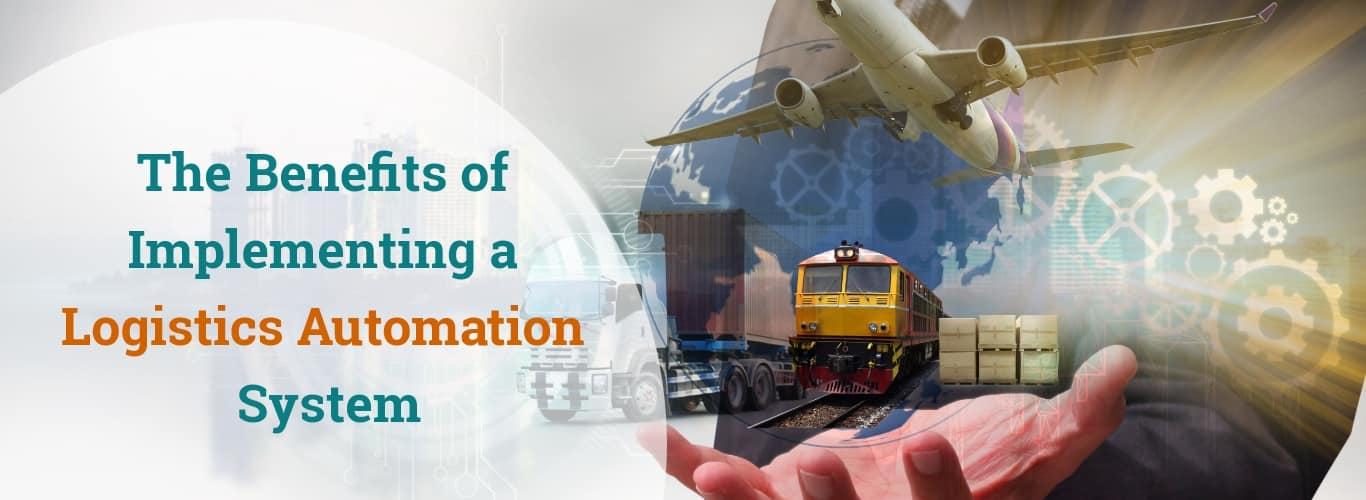Increasing Use of Data and Analytics to Improve Logistics Efficiency and Cost-Effectiveness

Logistics has never been more complex than it is today. The worldwide idea of the inventory network has made continually moving elements that can essentially influence an organisation’s benefit. This was made clear by the mind-blowing strain put on strategies because of the Coronavirus pandemic. In response, data analytics is helping manufacturers, shippers, and retailers gain visibility into their operations and optimise them so they can better deal with the unexpected. Thus, information-driven organisations are expanding overall revenues and consumer loyalty levels.
Let’s look at specific ways that data and analytics is improving logistics efficiency and cost-effectiveness :
1. More Accurate Supply and Demand Forecasting :
Utilising the abundance of exclusive and outsider information accessible, organisations can follow and adjust to shifts popular close to continuous. Enormous information investigation permits organisations to produce more exact market interest figures to illuminate stock and shipment arranging.
2. Inventory Management :
If a product is out of stock, there’s a high probability that customers will move their buying conduct. An IHL study uncovered that 37% of clients who experience an unavailable thing will buy from an alternate brand, while 21% will purchase from an alternate retailer.
3. Warehouse Management:
In addition to reducing stockouts and overstocks by optimising inventory management, data analytics can also improve the efficiency of warehouse management. Companies can track the movement and location of stock and combine this information with sales data to identify the best location for each SKU in the warehouse and find opportunities to streamline.
To improve their operations, companies should identify risks associated with their suppliers. With this information, companies can either work with their suppliers to solve the problems creating the risks or select new suppliers if the risks can’t be mitigated (i.e. incidents of natural disasters or political instability that affect the supplier’s ability to fulfil commitments).
4. Supplier Risk Management :
To improve supplier risk management, companies can track any indicator that reflects a risk, such as:Late shipments
-
Delivery to the wrong location
-
Delivery of the wrong product or quantity of product
-
Inefficient processes used by suppliers
-
Regulatory compliance issues
5. Prevent Loss with Better Fraud Detection :
Fraud can be costly for a business in any industry. Data and analytics can help organisations discover trends that point towards suspicious activity to reduce fraud and thwart criminal efforts. For example, big data can help retailers build profiles and set thresholds for normal customer behaviour regarding the purchase of a specific product over some time. With this baseline established, retailers can then identify customers whose behaviours indicate that they may be committing return fraud. Retailers can then blacklist these customers or take other actions to help prevent return fraud.
6. Performance management :
Solving inefficiencies and ensuring operational standards are respected by tracking any metric along the supply chain. Performance managers transform data insights into actionable results, such as the optimization of resource consumption or delivery routes. For instance, shippers expect drivers to arrive on time, maintain docking schedules, and avoid wasted time. Data can help us to understand and monitor the performance of the workforce.
7.Productivity improvement :
Real-time data sharing with all partners is essential. The insights that a company gathers are useful both for a logistics company and for its partners. This type of data sharing in logistics can help improve operational efficiency by capturing fluctuating customer demand, external factors, and the operations of the partners. It will enhance transparency and help all stakeholders to streamline their processes, ultimately improving the quality of operational processes, and the overall performance of the logistics business.
Challenges to implementation of Big Data Analytics:
According to a survey, 37% of managers have just “engaged in conversations” to implement analytics. 27% of those who have implemented big data analytics have it operationalized and embedded into critical supply chain processes. However, 57% of respondents use big data as logistics management solutions on an ad-hoc basis. Some of the main barriers for individual companies are:
Visibility:
business logistics experts may have large volumes of data but lack the expertise to see and analyse it as the graphic interface is not user-friendly.
Volume:
the amount of high quantities of data is still something that needs development in small economies and regions like Latin America, the volume of patterns are available in an urban area or a metropolitan region, but are scarcer in forecast traffic in rural areas. With third party companies, it’s easier to create synergies and economies of scale with big data information. Otherwise, the individual in-house use of big data is not cost-effective.
Use:
people may have access to data but don’t know how to give them direction in terms of their desired outcomes, strategic and day-to-day orientations. In other words, managers have massive amounts of information available, but don’t know what to do with it.
Data and analytics are transforming many industries and businesses, and logistics is not an exception. The complex and dynamic nature of this sector, as well as the intricate structure of the supply chain, make logistics a perfect use case for data. Valuable insights obtained through data leveraging enable the industry players to optimise routing, to streamline factory functions, and to give transparency to the entire supply chain, for the benefit of both logistics and shipping companies alike.98% of third-party logistics companies believe that data analytics is critical to making intelligent decisions. 71% of them believe that big data improves quality and performance.
Conclusion :
Big data analytics in the supply chain can dramatically improve operations and maximise ROI. It becomes a lot easier to predict and work on customer requirements and hence enhances customer satisfaction and loyalty.
The increasing use of data and analytics can improve logistics efficiency and cost-effectiveness by providing insights into supply chain operations, identifying inefficiencies, optimising routes and inventory management, and improving customer service through better demand forecasting and real-time tracking.
-
LogixGrid can help you to achieve below ROI.
-
Improve Business operations by 80%
-
Decrease turnaround time by 30%
-
Ensure 100% automated operations
-
Decrease overall delays by 30%
-
Ensure 100% SLA adherence




